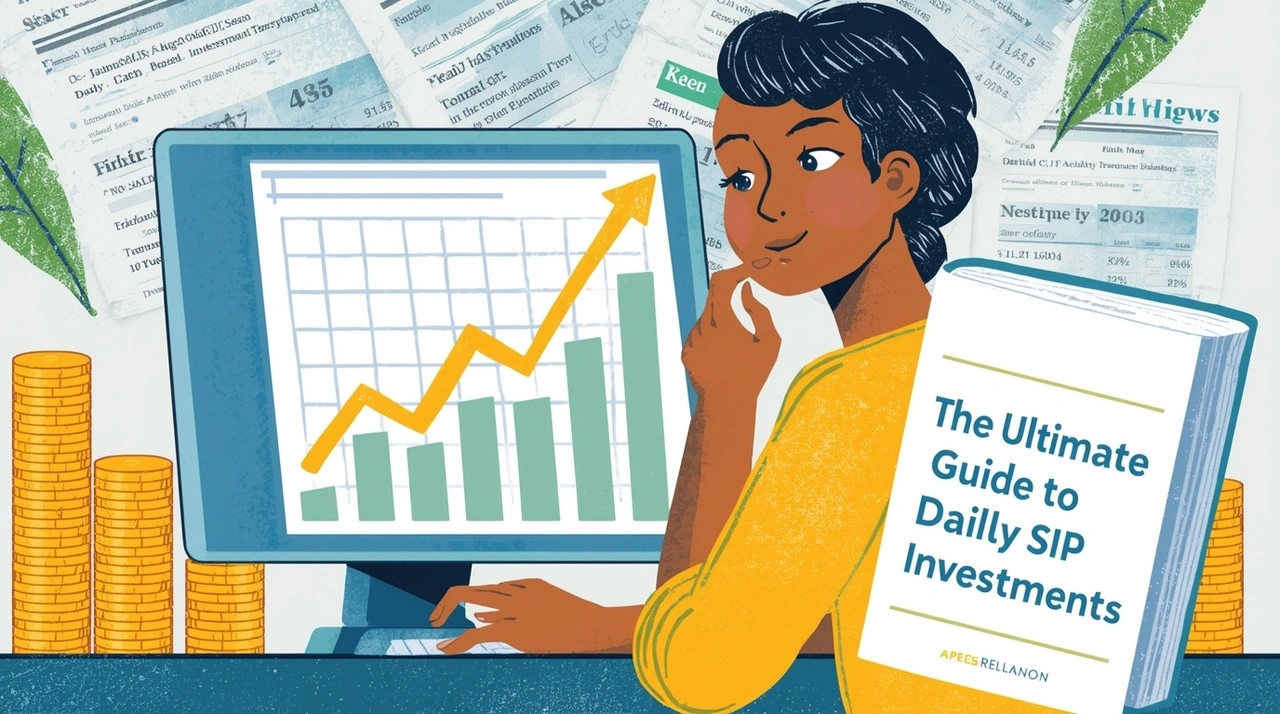The Ultimate Guide to Daily SIP Investments: How Small Daily Contributions Can Grow Big
Investing need not start with a large amount. A Daily SIP (Systematic Investment Plan) lets you invest a small fixed sum each trading day into a mutual fund or ETF. Over time, disciplined daily contributions and compounding create substantial wealth. This guide explains daily SIPs simply, lists benefits, and shows how to plan using a Daily SIP Calculator. Start investing today.
What is a Daily SIP?
A Daily SIP is a schedule where you contribute a set amount every trading day instead of once a month. It suits savers who prefer small, frequent actions—like ten to one hundred rupees a day. Frequent investing smooths average cost. You can also check growth assumptions using the SIP Calculator with Inflation.
Key Benefits
- Habit building: Small daily amounts are easy to save and become routine.
- Rupee-cost averaging: Frequent purchases reduce the impact of market swings. You can calculate expected returns using the SIP Calculator.
- Low barrier: Start with minimal amounts and scale up later.
- Emotion control: Regular automation reduces impulsive decisions.
How Compounding Helps
Compounding means returns generate further returns. For example, twenty rupees per day equals about six hundred rupees monthly. Over years, this habit can grow significantly if returns are positive. Use the Daily SIP Calculator or Compound Interest Calculator to model outcomes with different rates and durations.
Daily SIP vs Lump-sum
Lump-sum investing can deliver strong returns when invested at the right time, but it carries timing risk. Daily SIPs spread risk over many purchase dates and support steady saving. To compare both, try the Lump-sum SIP Calculator or Lump-sum with Inflation tool.
Step-up SIPs and Inflation
As income rises, increasing your SIP amount yearly (step-up SIP) helps preserve purchasing power. Calculators that include step-up and inflation assumptions give more realistic targets. Try the Step-up & Inflation Calculator to plan adjustments effectively.
Practical Start-up Tips
- Begin small: Pick an amount you can easily save each day.
- Automate: Use automatic transfers or apps that round up transactions to invest spare change.
- Pick the right fund: Match fund type to your goal—equity for long growth, hybrid for balance. Tools like Mutual Fund Calculator can help estimate returns.
- Annual review: Check performance yearly and increase contributions with income.
- Use tools: Plan with the Best SIP Calculator Online.
Mistakes to Avoid
Do not stop contributions during market dips. Avoid frequent switches based on short-term returns. Watch expense ratios and unnecessary fees that reduce net gains. For smarter planning, consult the Financial Independence Calculator.
Takeaway
Daily SIPs suit disciplined savers who prefer frequent, small investments. With compounding and regular increases over time, modest daily sums can become meaningful wealth. Use linked calculators to test plans and choose the approach that fits your cash flow and goals.
Frequently Asked Questions
What is the minimum amount required for a daily SIP?
Minimums differ by platform. Many allow ten rupees per day. Start with an amount that feels comfortable and sustainable. Calculate potential returns using the Daily SIP Calculator.
Is a daily SIP better than a monthly SIP?
Daily SIPs offer finer averaging and habit formation while monthly SIPs are easier to manage. Compare outcomes with the SIP Calculator.
Can I change frequency from daily to monthly later?
Yes. Most funds and platforms allow frequency or amount changes. Confirm procedures with your provider.
How do I calculate expected future value of a daily SIP?
Use a Daily SIP calculator, enter daily amount, expected annual return, and duration. You may also check the Future Value Calculator for additional insights.
Should I consider inflation when planning SIPs?
Yes. Inflation reduces purchasing power. Use calculators with inflation or step-up options to set realistic goals, such as the Step-up & Inflation Calculator.
Ready to try? Explore the calculators above and see how a small daily habit can build big results over time.


